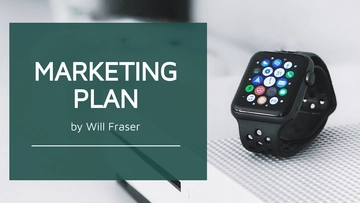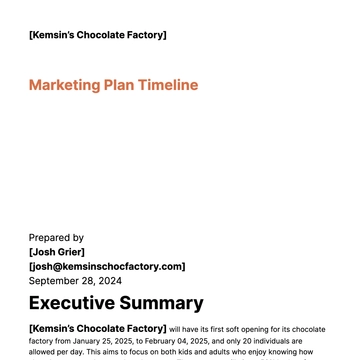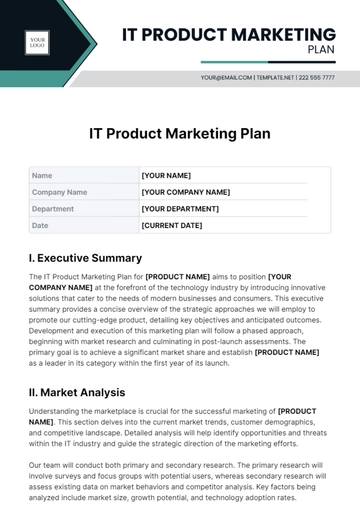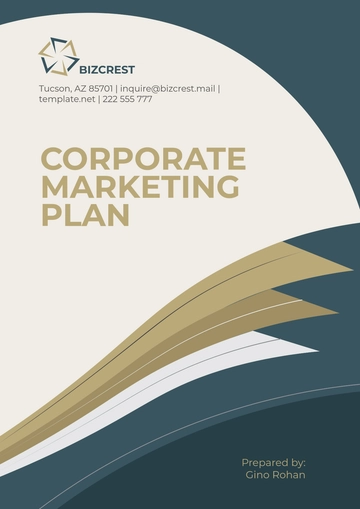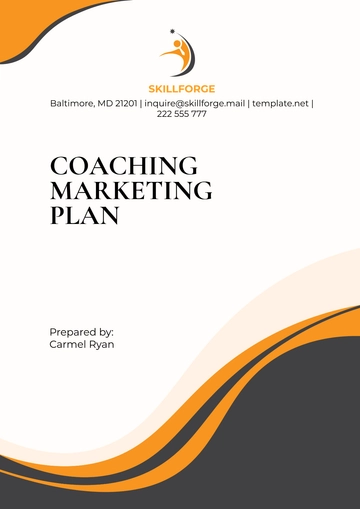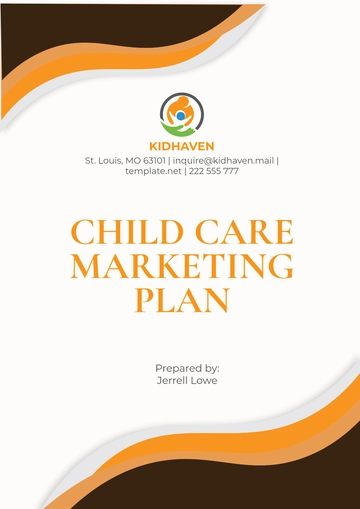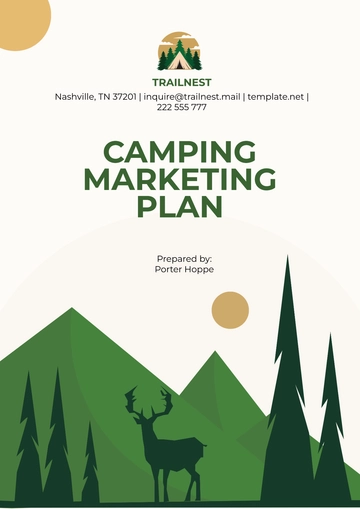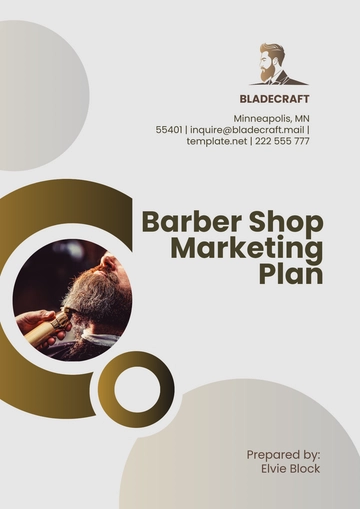Free School Social Media Marketing Plan
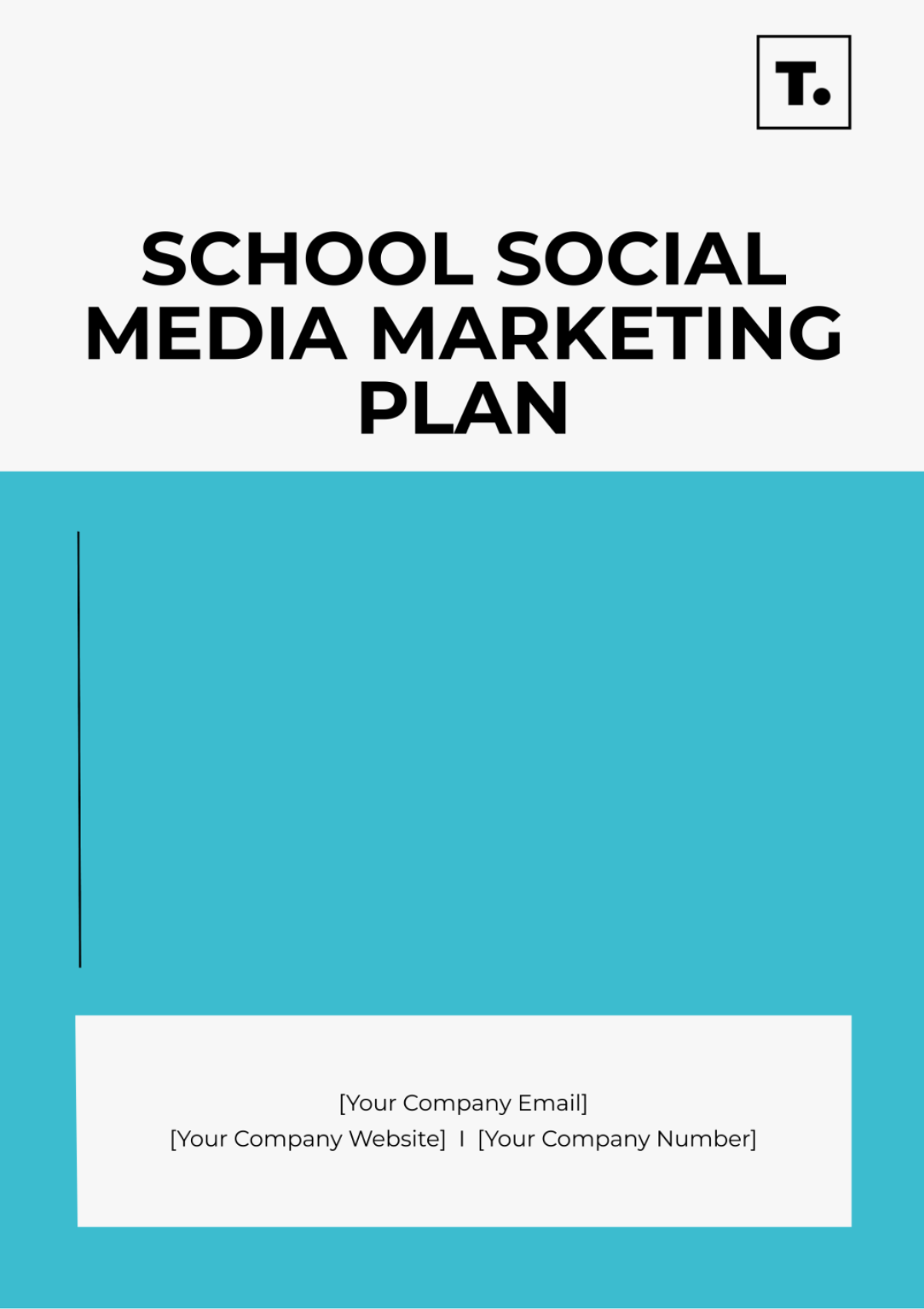
Prepared by: [YOUR NAME]
Contact Email: [YOUR EMAIL]
School Name | [YOUR SCHOOL NAME] |
Contact Person | [YOUR NAME] |
[YOUR EMAIL] | |
Phone Number | [YOUR SCHOOL NUMBER] |
Address | [YOUR SCHOOL ADDRESS] |
Website | [YOUR SCHOOL WEBSITE] |
Social Media Profiles | [YOUR SCHOOL SOCIAL MEDIA] |
I. Executive Summary
The School Social Media Marketing Plan for [YOUR SCHOOL NAME] is designed to attract prospective students by showcasing campus life, academic programs, facilities, and success stories. This plan outlines strategic goals, target audience insights, platform strategies, and performance metrics to effectively utilize social media platforms for student recruitment.
II. Goals and Objectives
Increase Enrollment: Achieve a [X%] increase in student enrollment for the upcoming academic year.
Boost Brand Awareness: Enhance the school's visibility and reputation within the local community and target demographics.
Engage Prospective Students: Foster meaningful interactions with prospective students by providing valuable information and insights into campus life.
Showcase Academic Excellence: Highlight academic programs, faculty achievements, and student success stories to demonstrate the school's commitment to excellence.
III. Target Audience: Student Recruitment
Demographics
Age: Prospective students typically aged [AGE RANGE].
Location: Targeting students from [GEOGRAPHIC LOCATIONS] interested in attending our school.
Education Level: High school students considering higher education options.
Interests: Individuals interested in [INTEREST AREAS RELATED TO ACADEMICS OR CAMPUS LIFE].
Online Behaviors
Social Media Usage: Active users of social media platforms such as Facebook, Instagram, Twitter, and LinkedIn.
Content Consumption Habits: Engage with educational content, campus-related updates, and student testimonials.
Information Seeking: Search for information on academic programs, campus facilities, and student life experiences.
IV. Platform Strategy
Facebook Strategy
Content Types | Campus tour videos, student testimonials, academic program highlights, live Q&A sessions |
Posting Frequency | [NUMBER] times per week |
Engagement Strategy | Respond to inquiries promptly, host virtual campus tours, share success stories of alumni |
Instagram Strategy
Content Types | Stories featuring campus events, reels showcasing student life, carousel posts of academic achievements |
Posting Frequency | [NUMBER] times per week |
Engagement Strategy | Run student photo contests, collaborate with student influencers, share behind-the-scenes glimpses of campus life |
Twitter Strategy
Content Types | Tweets about upcoming events, threads discussing academic programs, images of campus scenery |
Posting Frequency | [NUMBER] times per day |
Engagement Strategy | Participate in education-related hashtags, retweet student achievements, respond to inquiries in real-time |
LinkedIn Strategy
Content Types | Articles highlighting faculty research, professional insights into career prospects, updates on industry partnerships |
Posting Frequency | [NUMBER] times per week |
Engagement Strategy | Join alumni networking groups, share thought leadership content, promote career development resources |
V. Content Plan
Content Calendar: Schedule of posts aligned with key recruitment events, academic milestones, and admissions deadlines.
Content Creation: Utilize student ambassadors, faculty members, and alumni for creating authentic content.
Content Themes: Themes focusing on academic excellence, campus diversity, extracurricular opportunities, and student support services.
VI. Engagement Tactics
Response Time: Aim to respond to inquiries and comments within [TIME FRAME].
Interactive Content: Create polls, quizzes, and interactive stories to encourage engagement.
User-Generated Content: Encourage students and alumni to share their experiences using branded hashtags.
VII. Measurement and Analytics
KPIs: Track metrics such as reach, engagement rate, click-through rate, conversion rate, and application submissions.
Tools: Utilize social media analytics tools like [ANALYTICS TOOL NAMES] to monitor performance and optimize strategies.
Reporting: Generate regular reports to evaluate the effectiveness of social media campaigns and adjust tactics accordingly.
VIII. Budget and Resources
Budget Allocation: Allocate resources for sponsored content, ad campaigns, content creation, and social media management tools.
Human Resources: Assign dedicated staff members or student interns to manage social media accounts and create content.
Vendor Partnerships: Seek strategic partnerships with vendors for specialized services like videography, graphic design, or photography.
Training and Development: Provide regular training and development for staff and interns handling social media to keep them current on the latest trends and best practices in the field.
Conclusion
The School Social Media Marketing Plan outlined above provides a comprehensive framework for [YOUR SCHOOL NAME] to effectively attract prospective students, enhance brand visibility, and engage with the school community through strategic social media initiatives. By leveraging audience insights, employing tailored content strategies, and fostering meaningful interactions, we aim to strengthen our position as a leading educational institution and achieve our enrollment goals.
- 100% Customizable, free editor
- Access 1 Million+ Templates, photo’s & graphics
- Download or share as a template
- Click and replace photos, graphics, text, backgrounds
- Resize, crop, AI write & more
- Access advanced editor
Elevate your school's online presence with Template.net's School Social Media Marketing Plan Template. This editable and customizable resource empowers you to craft tailored strategies for engaging your community. Seamlessly adjust content with our Ai Editor Tool, ensuring your marketing efforts resonate with your audience. Unlock your school's potential today.
